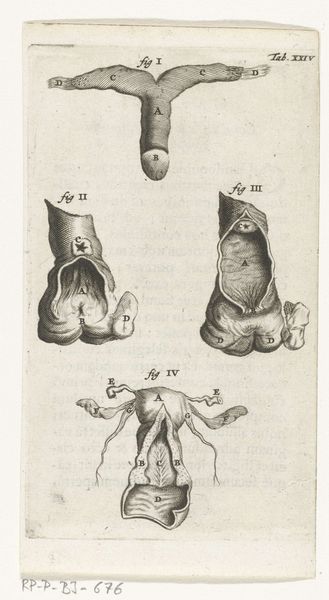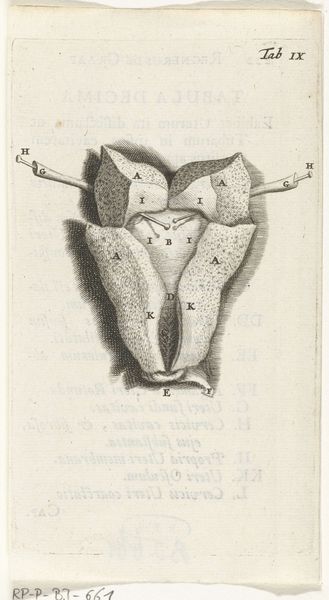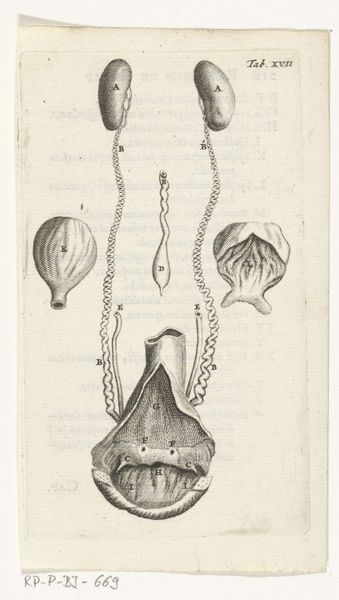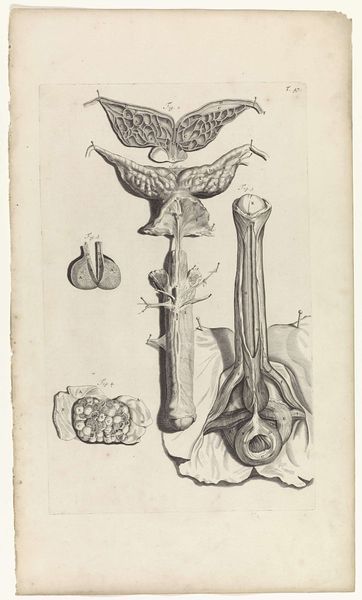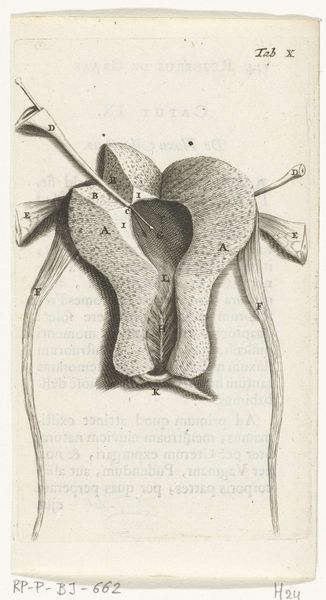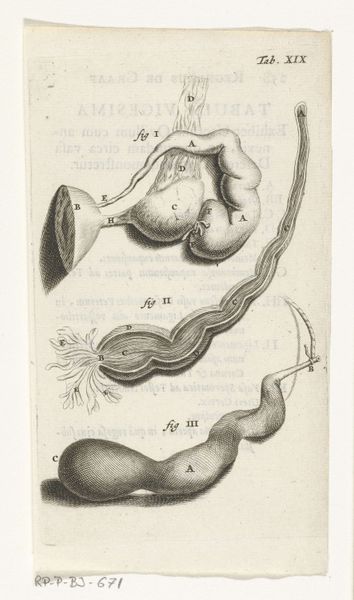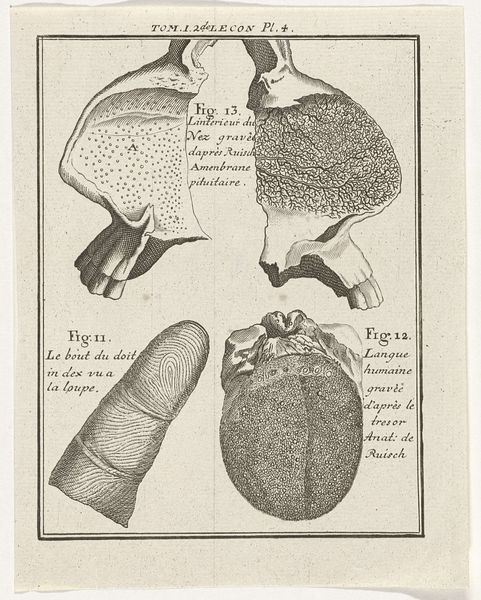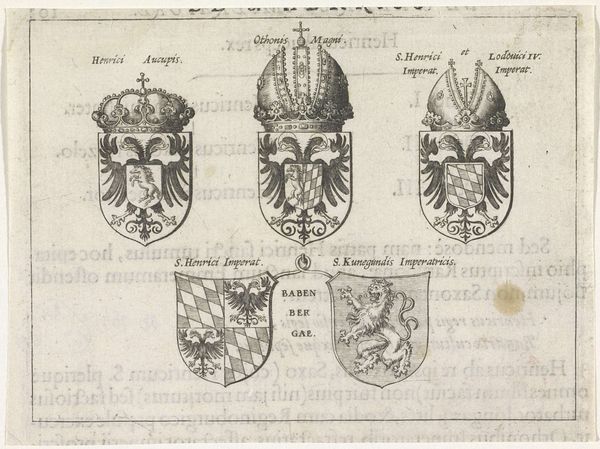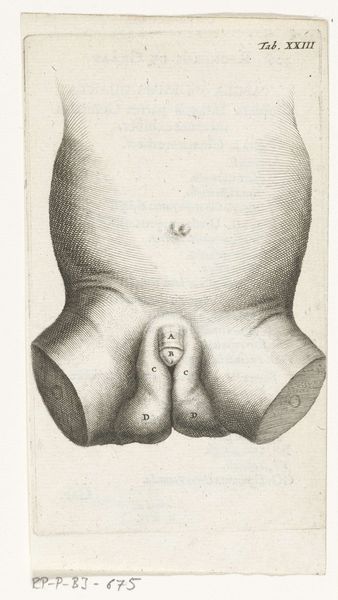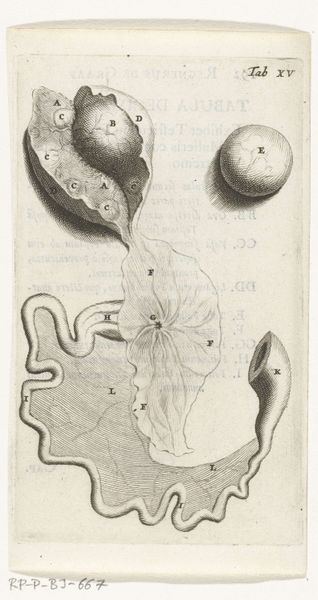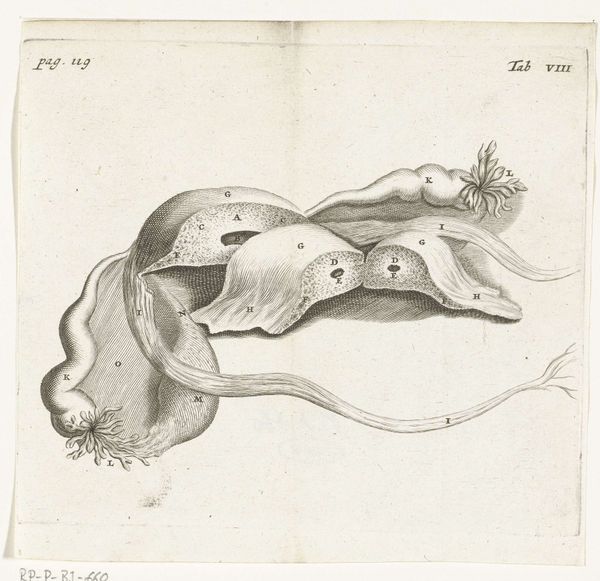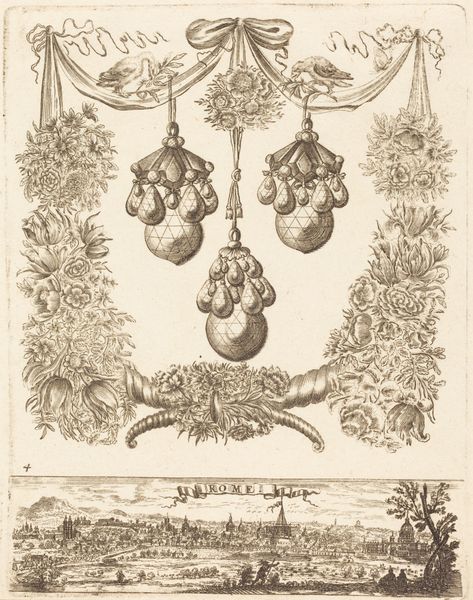
print, engraving
#
portrait
#
baroque
# print
#
old engraving style
#
figuration
#
line
#
islamic-art
#
history-painting
#
academic-art
#
engraving
Dimensions: height 140 mm, width 80 mm
Copyright: Rijks Museum: Open Domain
Curator: This is a print entitled "Prints of the Female Reproductive Organs," created in 1672 by Hendrik Bary. It’s currently part of the Rijksmuseum collection. Editor: It’s remarkably clinical, isn’t it? The starkness of the engraving against the paper gives it an almost confrontational directness. I'm struck by the almost diagrammatic rendering – very detached. Curator: Yes, Bary was a renowned engraver, and you can see his technical skill in the precise linework here. Notice the cross-hatching used to create depth and volume, effectively communicating the texture of the organ. We see an intimate study turned into an almost mass-produced image, shifting its function. Editor: Precisely. Considering the context of the 17th century, this wasn't just an artistic study. It speaks to the limited access women had to knowledge about their own bodies, or to participate in its scientific and cultural discussions, for that matter. The engraving potentially served a purpose in medical education, yet simultaneously reveals societal power dynamics regarding the female form and its representation. Curator: I find myself drawn to the way the copperplate printing process renders detail with surprising accuracy, emphasizing certain textures or the variations in form within the same organ. How many impressions were pulled and the lives that it reached remains unclear, yet this process represents the dissemination of new modes of scientific inquiry. Editor: And thinking about the historical narratives at play here, it begs the question of authorship and audience. Who commissioned it? What purpose did these prints ultimately serve within a predominantly patriarchal medical establishment? Was this to be accessible knowledge, or to exclude through learned Latin texts on the opposite pages. Curator: Right. These prints, as objects, occupy a fascinating intersection between art, science, and society. Their existence as a physical item carries immense significance in understanding knowledge production at that moment. Editor: Absolutely. Beyond the detached aesthetic, this print acts as a mirror reflecting a specific moment in history, exposing attitudes towards women, science, and the body. A truly thought-provoking artifact, really.
Comments
rijksmuseum about 2 years ago
⋮
In 1672, physician and anatomist Reinier de Graaf published his De mulierum organis about the female reproductive organs. The book contains detailed prints by Hendrik Bary, among them several of the vagina. De Graaf was the first to conclude that a foetus was the product not just of a man’s seed, but also of a woman’s egg. He discovered what he called blisters, which later became known as Graafian follicles.
Join the conversation
Join millions of artists and users on Artera today and experience the ultimate creative platform.
